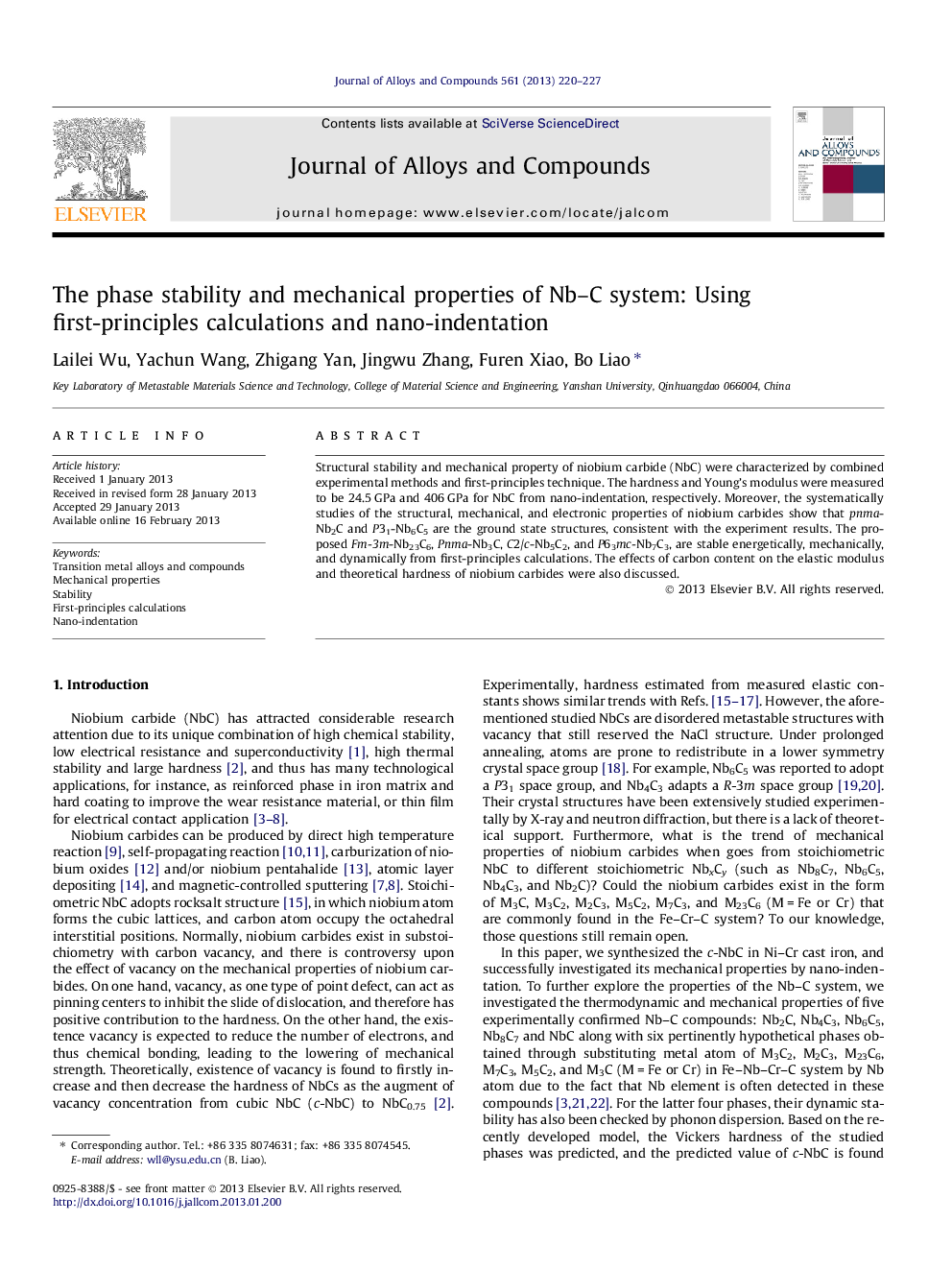| کد مقاله | کد نشریه | سال انتشار | مقاله انگلیسی | نسخه تمام متن |
|---|---|---|---|---|
| 1614427 | 1516332 | 2013 | 8 صفحه PDF | دانلود رایگان |

Structural stability and mechanical property of niobium carbide (NbC) were characterized by combined experimental methods and first-principles technique. The hardness and Young’s modulus were measured to be 24.5 GPa and 406 GPa for NbC from nano-indentation, respectively. Moreover, the systematically studies of the structural, mechanical, and electronic properties of niobium carbides show that pnma-Nb2C and P31-Nb6C5 are the ground state structures, consistent with the experiment results. The proposed Fm-3m-Nb23C6, Pnma-Nb3C, C2/c-Nb5C2, and P63mc-Nb7C3, are stable energetically, mechanically, and dynamically from first-principles calculations. The effects of carbon content on the elastic modulus and theoretical hardness of niobium carbides were also discussed.
► Hardness and Young’s modulus of c-NbC have been evaluated by nano-indentation.
► The properties of Nb–C system have been studied by first-principles calculations.
► Pnma-Nb2C and P31-Nb6C5 are identified as ground state structures for Nb–C system.
► Four proposed Nb-C phases are stable energetically, mechanically, dynamically.
Journal: Journal of Alloys and Compounds - Volume 561, 5 June 2013, Pages 220–227